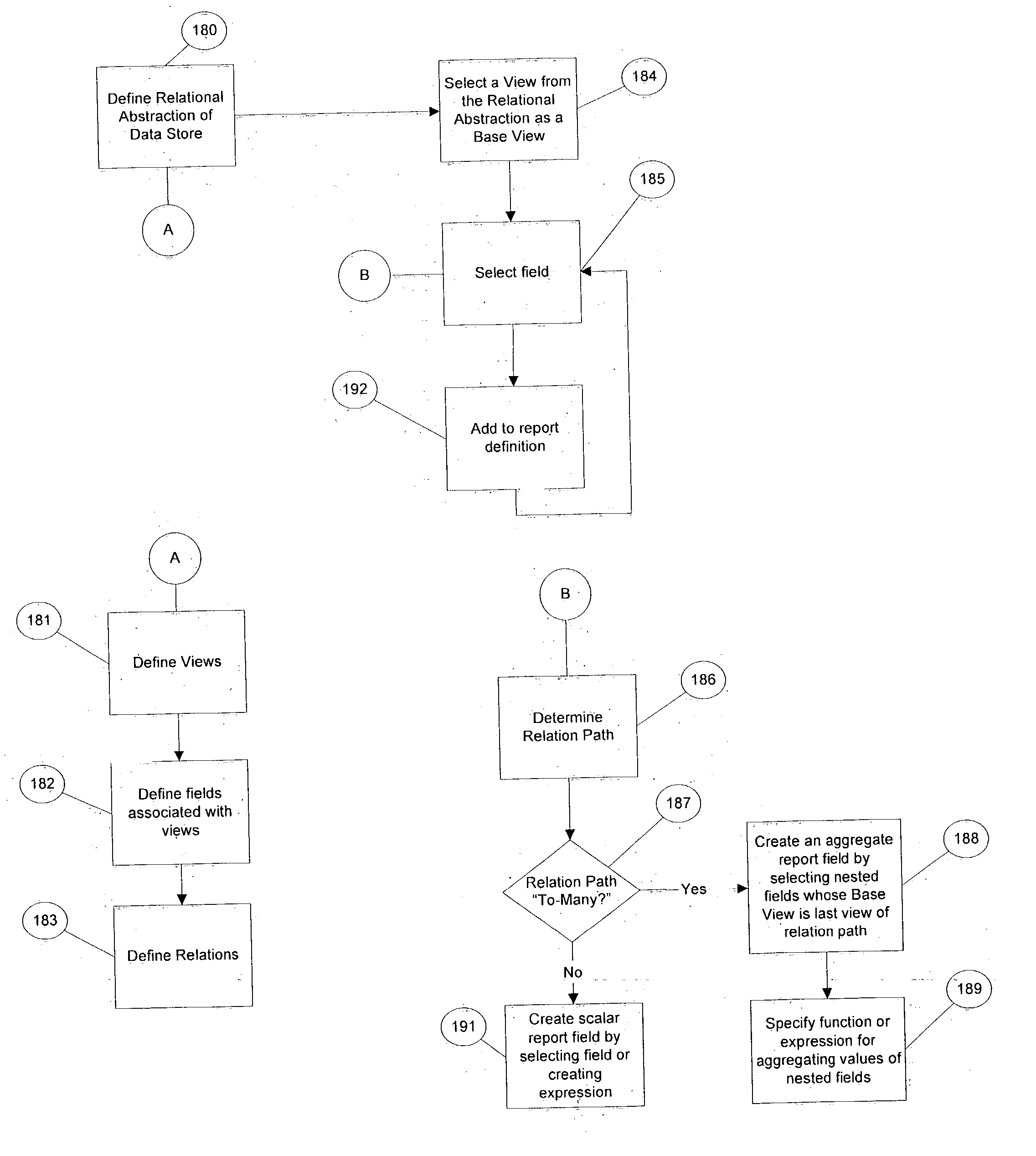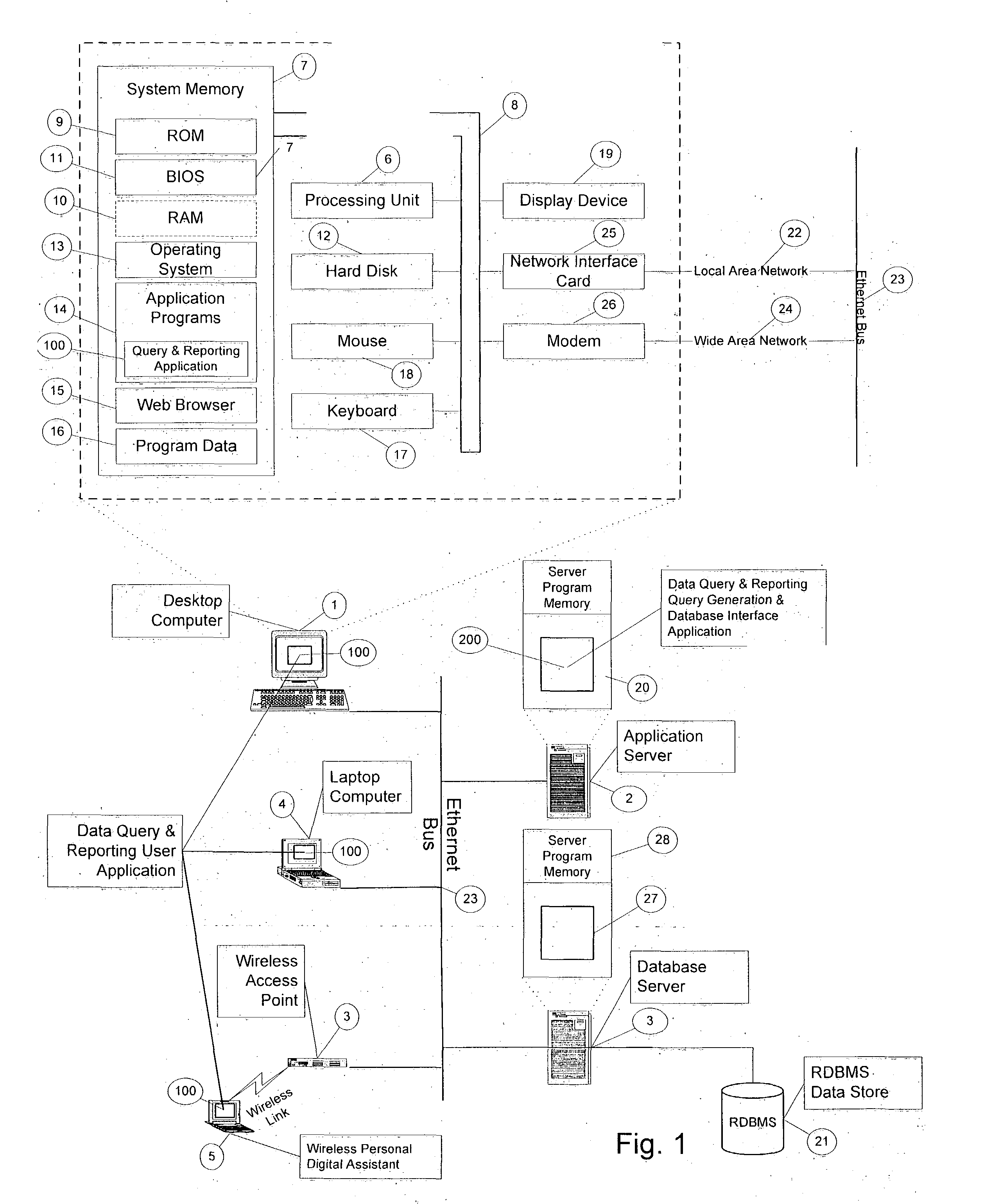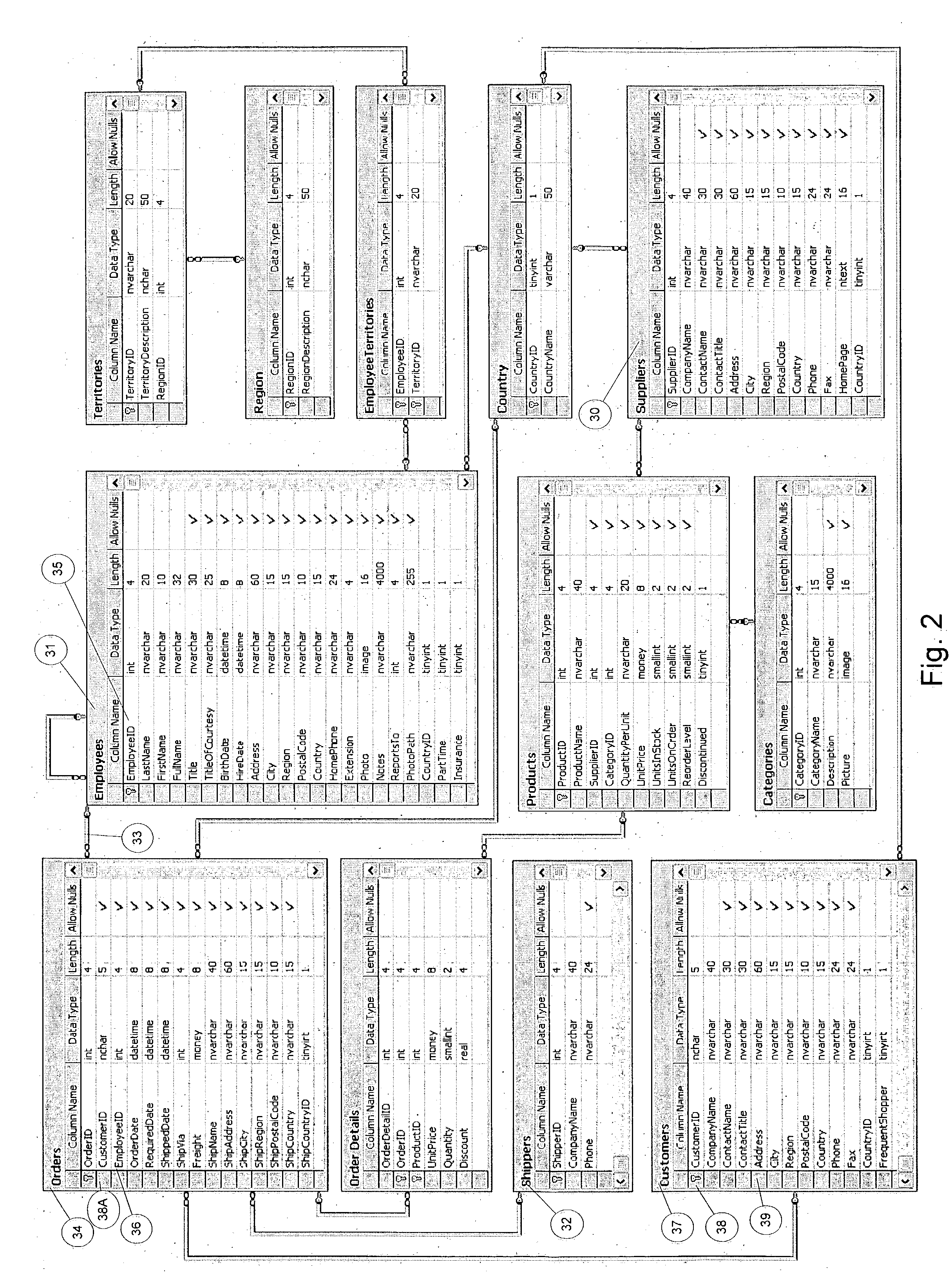However, developing suitable extraction and reporting tools for generating ad hoc queries against available data frequently has required too much time and human capital, significantly limiting the usefulness of the data.
First, the advent of more powerful personal computers and operating systems has resulted in an explosion of data storage in standardized data stores or databases and desktop tools to manipulate this data.
Although the foregoing technological advances have made significant progress towards solving the-problems associated with extracting useful information from data, several problems still exist.
Current systems are too complex, too expensive, too rigid and too insecure to support broad access and use of information.
Prior systems are too complex to support access and use by a broad cross-section of information consumers.
Most will likely never have the skills necessary to compose and submit
database queries.
However, desktop database solutions typically result in fragmented data that is oriented towards very specific needs.
Moreover, the solutions proffered by prior systems to address this complexity often do not work well.
However, many information consumers cannot provide specific, accurate requirements to a
report writing expert on the first try.
Typically, prior systems offer few tools, if any, to unsophisticated information consumers for quickly and easily creating reports without
programming assistance.
Existing tools are limited to simplified
wizard and web interfaces that simplify complexity by minimizing the number of options and inputs required of users.
However, because designers of these wizards and web interfaces presume that specific types of data will be manipulated, these interfaces may be inflexible and lead to inaccurate tables or cross sections of data when applied to different types of data.
They may also
restrict the information user from accessing needed information.
Prior systems have often been too expensive to support broad access and use.
The emergence of special data warehouses deploying
online analytical processing (OLAP) and complex data models requires that data be transformed into multidimensional arrays or cubes, limiting both flexibility and timeliness of the data to some extent and requiting expensive applications and
programming support.
Because of such, current systems are so complex that they can only be deployed successfully in large enterprises that can afford them.
Prior systems have frequently been too rigid to support broad access and use.
Users generally cannot
drill down on data or
drill through data to determine if the data makes sense.
Moreover, the various physical data layouts used in analytical systems have diminished the value of the data for many information users.
Because ER-modeled systems result in numerous database tables, analytical systems typically do not
handle them very well.
Because they contain
extensive data, executing joins on multiple tables, typically requires a great deal of
processing power and memory.
While these efforts are designed to increase
processing speeds, they often result in the loss of some data and important
business logic.
However, in each case the inherent
business logic relations among the fields are typically lost.
Further, once the user has selected certain fields, existing
data query systems either automatically decide what joins to make on the tables associated with the fields, or present the user with a clumsy Boolean interface that itself is not aware of the relations among the selected fields.
This can produce inconsistent results as fields are added or removed from a query, and makes generating a meaningful query very difficult.
Missing or automatically interpreted join information can cause cross joins to be performed, among other errors, some of which are detected by the query reporting engine, while others are not, transparently returning erroneous results to the user and making report validity and
data integrity a major issue for an organization.
Prior systems are also typically too insecure to support broad use.
Most organizations cannot provide broad access to analytical data because of a lack of security for the data.
Therefore, organizations wanting to provide broad access to data are either required to
expose sensitive data or
restrict data access.
 Login to View More
Login to View More  Login to View More
Login to View More 


